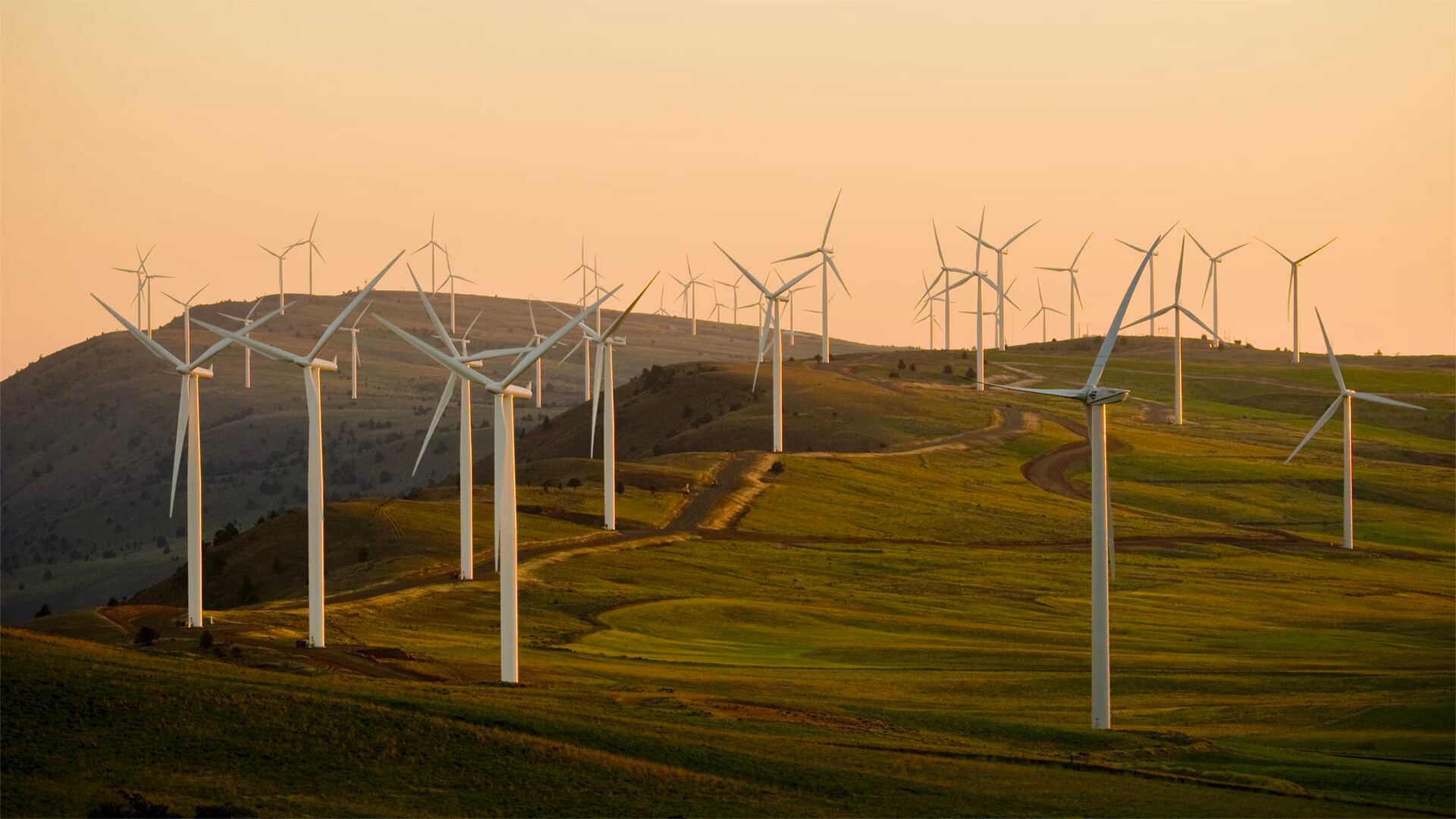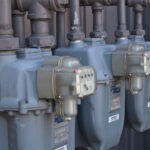The largest Greentech power generation system in the hemisphere is under construction in New Mexico. SunZia has raised $11 billion for this project and aims to generate 3.5 gigawatts of wind power for the NM, AZ, and CA energy markets.
This is a massive step for the green transition, and it will play a pivotal role in bolstering green power generation within the US. You might be wondering why they chose wind power; well, it’s more cost-effective than solar, more reliable, and tech advances have enabled us to tap into more stable and powerful currents.
The transmission component of this project is important to; it shows that the energy can be generated and captured in regions with low demand and moved across state lines into areas with high demand. We’ll have to wait and see how this will work in practice, but this is looking like a ‘win’ as of now.
The SunZia project is just the tip of the spear as we’ll continue to see more of these projects pop-up soon, but this is a great start for the green transition. The first energy from this plant isn’t expected to be generated until 2026, so don’t pop the bubbly quite yet.
Here at Zeihan On Geopolitics we select a single charity to sponsor. We have two criteria:
First, we look across the world and use our skill sets to identify where the needs are most acute. Second, we look for an institution with preexisting networks for both materials gathering and aid distribution. That way we know every cent of our donation is not simply going directly to where help is needed most, but our donations serve as a force multiplier for a system already in existence. Then we give what we can.
Today, our chosen charity is a group called Medshare, which provides emergency medical services to communities in need, with a very heavy emphasis on locations facing acute crises. Medshare operates right in the thick of it. Until future notice, every cent we earn from every book we sell in every format through every retailer is going to Medshare’s Ukraine fund.
And then there’s you.
Our newsletters and videologues are not only free, they will always be free. We also will never share your contact information with anyone. All we ask is that if you find one of our releases in any way useful, that you make a donation to Medshare. Over one third of Ukraine’s pre-war population has either been forced from their homes, kidnapped and shipped to Russia, or is trying to survive in occupied lands. This is our way to help who we can. Please, join us.
TranscripT
Hey, everybody. Peter Zeihan here coming to you from Colorado. Now, I get a lot of flak for never having good news. So I figured, you know, here, here’s something fantastic that’s happened over the holidays. There’s an organization called Sun Zia, which is a company that produces and transmits electricity that has closed funding and started construction on what will be the largest green tech power generation system in the hemisphere, 3.5 gigawatts, which in electrical terms is huge.
Why does this matter? A bunch of reasons. Number one, $11 billion is how much money they had to raise. Raising money these days is difficult because the baby boomers are majority retired. All of their capital, all their savings has been put into relatively static things like cash and T-bills. And so if you’re trying to raise funding for anything, it’s gotten a lot more expensive.
In addition, unlike if you were to build, say, a natural gas power plant or anything that’s fossil fuel based with those systems, fossil fuels, only about one fifth the cost of your of your full lifecycle cost for your facility has to be raised at the front end to pay for construction. But most of it is instead raised from fees when you’re generating the power as you go.
Instead with green tech, two thirds of the cost is upfront because there’s no fuel costs, but the upfront cost is much higher. So you’re talking about two thirds of the total value of the entire lifecycle of the project has to be raised before day one. And so doing that at all is difficult. Now the capital costs of roughly tripled, but Sunsilk was able to pull it off.
So our number one big achievement for the capital cycle. Number two, the size 3.5 gigawatts, biggest in the hemisphere. If we are going to do the green transition, we need to increase the amount of power generated in the country by at least 50%. This is a nice little bite taken out of that. But from my point of view, if we’re going to deal with the post China world and expand the industrial plant to manufacture everything we need, we need to expand it by another 50%.
So regardless, if you’re a green, if you’re pro-development or both, this takes us a significant step forward. We still need another 500 of these steps, but you know, we’re going in the right direction. Okay. Number three, what it is, it’s wind and it’s in New Mexico. So wind, as a rule, is much more cost effective. And solar in large part because every time the sun goes down, all those solar panels just become paperweights, whereas the wind blows at night.
In addition, while we have had incremental improvements in the capacity of photovoltaic cells over the last 15 years, it’s nothing compared to what has gone on with wind. It used to be that wind turbines were 100 feet tall.
This year we’re going to have prototypes for ones that are thousand meters, 1000 feet, 300 feet tall. You know, just massive, massive structures. And they generate more than an order of magnitude more power than the old ones do. And more importantly than their size is their height, because they’re reaching wind currents that are far more stable and far stronger.
And so we’re seeing places in Texas, in Iowa, and now in New Mexico that are using some of these taller turbines to not just generate intermittent power, but baseload power. And that’s one of the big problems with green tech. If the wind stops or the sun goes down, you’re kind of out of luck and you have to switch to a more conventional system or a battery system, which is much more expensive.
But if you are tapping a wind current, that never stops, you can use it for baseload and avoid both of those problems. And that’s part of the goal here for the Sun Zia project. But fourth, and I think most importantly is that unlike almost every green tech project that we have done in the United States to this point, a huge portion of his own solar project is transmission.
They realize that there aren’t a lot of people in New Mexico and Albuquerque can only suck up so much power. And so this project includes massive transmission lines that go into Arizona and link into the network that goes into Los Angeles. And of the three and a half gigawatts of power generation that they’re anticipating all but a half a gigawatt of it is for export to the Arizona and California markets.
And the fact that this taps into the L.A. market is beyond awesome. I don’t know how many of you have heard of California, but doing business there is almost impossible. Electricity demand is hardly encouraged, but in many ways, electricity generation is flat out illegal. Very heavy regulatory environment. The state is also very power hungry and they import about a third of their electricity because they’ve made it very difficult for producers to operate in their home state.
Arizona is by far the single largest supplier they have. And every night when the sun goes down and all those panels of Californians built stop working, ten gigawatts of fossil fuel power comes from Arizona across the border, flooding into the L.A. zone. The Sun Zia project will now be able to put roughly three gigawatts of power into that network.
It doesn’t solve it at a stroke, but it’s a much more sustainable program from an environmental point of view than anything that we have right now. So, you know, a great step forward. One of the big things that we forget about in the wind and solar is not just the intermittency. It’s just that not everybody is places sunny and not every place is windy and most people don’t live in those locations.
So our best wind locations are the Great Plains from eastern Montana, North Dakota, going down to the panhandle of Texas and west Texas. Our best solar zone is from southern California. Go into west Texas as well. New Mexico is on the edge of that great Plains region, great wind potential, great solar potential. But there aren’t a lot of people in that entire area.
You got a wire somewhere. And this is one of those projects that has managed to work out the details of crossing state boundaries, two of them, and getting power to where people actually live in Phenix and Los Angeles. So we need many, many, many, many, many, many, many, many, many more of these for this to go. But the fact that we have our first really big one that’s already started construction.
First power is expected in 2026. It’s a great start.







